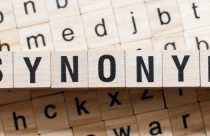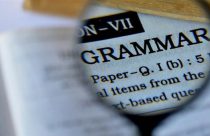Correct Positioning and Order of Writing Adjectives in English

If anyone has ever asked you to describe something, you most probably would have used an adjective (i.e., a word naming an attribute of a noun). In English, established phrase structure rules place no limit on the number of adjectives in a sentence. They, however, cannot occur in just any order, and native English speakers have very particular disciplines about what order is more correct.
Different types of words occupy different positions in a sentence. Nouns usually go at the beginning of a sentence and adjectives should ideally precede a noun. Here are some examples of adjectives that can occur either before or after a noun, but their positioning has an effect on the meaning of a sentence:
The concerned parents (= parents who are worried)
The parents concerned (= parents who are involved/mentioned)
The present people (= people who are here/there)
The people present (= people proposing/presenting something)
A responsible person (= a person who is sensible/reliable)
The person responsible (= the person who is to blame or is responsible for something)
Let us now see the mechanics of an underlying adjective order in English and explore if the same principles can be used in academic editing. If more than one adjective is used in a sentence, they tend to occur in a certain order. In English, two or three adjectives modifying a noun tend to be the usual limit. It should be noted that adjectives can be also formed from two or more words combined by the use of hyphens (compound adjectives). If multiples adjectives are used, then the framework below can be helpful in establishing basic guidance in creating an adjective order.
Correct Order of (Descriptive) Adjectives in English
| First | Determiner (this, that, these, those, my, mine, your, yours, him, his, hers they, their, some, our, several,…) or articles (a, an, the) |
| Second | Opinion, quality, or observation (lovely, useful, cute, difficult, comfortable) |
| Third | Physical description of size (big, little, tall, short) |
| Fourth | Age (old, new, young, adolescent) |
| Fifth | Shape (circular, irregular, triangular) |
| Sixth | Color (red, green, yellow) |
| Seventh | Origin or maker’s source (English, Mexican, Japanese) |
| Eighth | Materials (cotton, metal, plastic) |
| Ninth | Qualifier (a noun used as an adjective to modify the noun that follows; campus activities, rocking chair, business suit) |
| Tenth | Main/Head Noun that the adjectives are describing (activities, chair, suit) |
Order of Adjectives Examples
- This archeologist found a lovely-little-old-rectangular-black-Egyptian-marble rock below the pyramid of Giza.
- Scientists discovered this-beautiful-small-pink-French butterfly at the Parc Floral in Paris.
- Animal right activists were concerned as the product was unnecessarily tested on an-endangered-small-young-brown-African monkey.
- The new disease shows as an-unpleasant-big-circular-red patch on the forehead skin of those who are infected.
Using more than three descriptive types of adjectives in sequence to describe one noun or pronoun would sound a little awkward or difficult. Hence, disciplined adherence to the proper order of adjectives in English is surely worthwhile.
Happy Learning!










Easy to understand
Awesome
Awesome Easy to understand 😍🏆
Lovely and easy to understand
Great and easy to understand
Educative